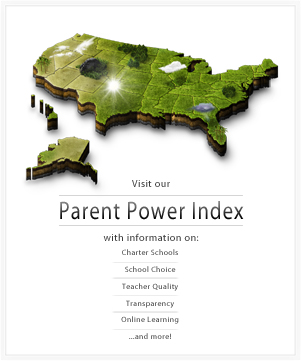Are the Schools in Your State Teaching Children to Read?
The Education Consumers Foundation has put together charts that not only help determine how well a school in a particular state or region is educating a student, but also shed light on the argument heard so often about poverty being an excuse for poor performance.
It is of the utmost importance that voters keep information like this at the forefront of their minds when they are going to the polls to vote, especially when voting for school boards or officials that will appoint school boards, as reform-minded candidates are more likely to understand that it is leadership and other quality inputs, and not just money alone, that will uplift learning. (If you’re having trouble determining where candidates stand on issues, be sure to check out Education Fifty and CER’s Field Guide on How to Spot a Real Reformer.)
Dr. J. E. Stone, President of Education Consumers Foundation, provides some context for these charts by explaining the poverty argument, why it exists, and why it can no longer be an excuse for failing to teach children to read:
The Issue
Since the sixties War on Poverty, observers of education have believed that the differences in outcomes between schools mostly reflect the socioeconomic disadvantages of their student populations.
In truth, economic disadvantage is big factor in school success. Disadvantaged students are 1-3 grade levels behind their age mates at school entry.
What is more important, however, is that effective schools can greatly increase the percentage of disadvantaged students who attain grade level by grade 3. Our state-by-state charts of poverty vs. third grade reading proficiency support that claim.
In virtually every school district, there are 40 to 80 percentage point differences in reading proficiency among schools with equally high concentrations of disadvantaged students. Some of them are charters.
Clearly, some schools are able to teach children to read despite their disadvantages–a conclusion that has been repeatedly affirmed by research.
Instead of 32% proficient by grade 4 (NAEP, 2011), the U. S. could have 90% proficient with effective reading instruction.
Message to School Board Candidates
This fall, we are sending a letter to school board candidates around the country urging them to look at reading proficiency in their local schools and to reject the demography excuse. Here is an example from Kentucky.
The Education Consumers Foundation’s mission is to improve education by making the facts of local school performance understandable to those who pay for and make use of the local schools. To that end, we have taken data published by the state departments of education in 21 states and created interactive online charts. They permit anyone to see at-a-glance how their individual local schools compare to others on reading achievement. The charts also reveal the larger pattern.
Third grade reading is arguably the single most important determinant of a student’s academic success and, in our view, failure in teaching this most basic of basics is at the heart of America’s college and career readiness problem. Significant improvement of student achievement cannot take place without improved early reading instruction
Leadership is the Problem
We are convinced that outcomes differ among high poverty schools because of how they go about their business. Superior outcomes are attainable, but schools fail to choose proven curricula and or adequately coordinate the efforts the sometime-changing group of 4 or more K-3 teachers who are responsible for these vital outcomes.
Teachers have to be on the same page and data driven–and that requires principal leadership. Policy customarily permits teachers to choose programs and teaching styles–but only if those choices well serve their students. When teachers or programs persistently fail, principals and superintendents are paid premium salaries to make decisions about personnel, resources and programs that will lead to success. Student demography can’t be an acceptable excuse when other schools succeed with the same students.
We urge school board candidates to familiarize themselves with the third grade reading performance of their local schools and to discuss this issue with their constituents. Voters need to understand that no amount of resources can significantly improve schools without effective early reading instruction, and effective programs require leadership, not excuses.










